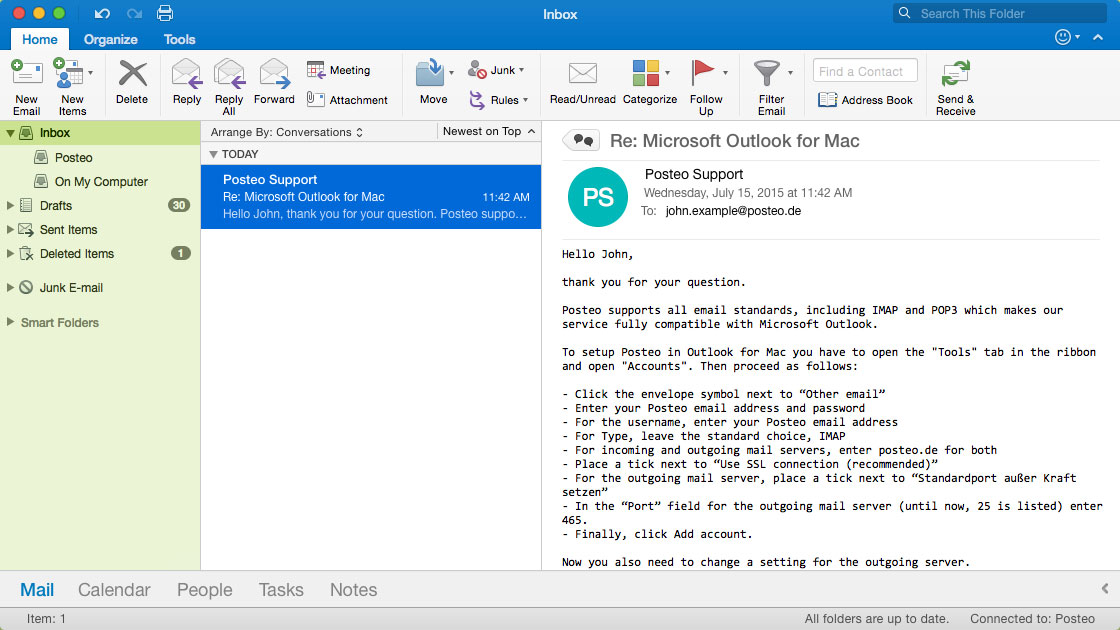

It's a lot of work, but shortcuts eliminate most of those steps. After assigning one category to an existing message, you can right-click it in the message window to assign others. At this point, you can check a category to assign it to the new email message. If there aren't any, just use the New option to create them. Outlook will list the default categories ( Figure C). In the resulting dialog, choose All Categories from the Categories dropdown. To see these shortcuts, open a new message (click New Email in the New group on the Home tab or press +N). Figure B Categories is dimmed.įortunately, you don't have to convert your IMAP account to a POP3 account to reclaim categories you can use shortcuts assigned to the categories. You can assign a category when creating a new message, but it requires a few extra steps in an IMAP account. If you open an existing email, you can open the dialog, but Categories is unavailable, as shown in Figure B. While in Reading Pane view mode, you can't open the Tags dialog (the dialog launcher isn't available). Nor can you choose the feature from the right-click submenu. Access categoriesįor better or worse, categories aren't available via the interface for existing messages-and that's a problem because that's where this feature's real power lies. It's also a tedious process and I don't recommend it. You can convert an IMAP account to a POP3 account, but you'll lose the in-the-cloud syncing capabilities. Outlook versions 2010 through 2016 will (usually) force you into the IMAP camp. If that option isn't there, it's almost certain that you have an IMAP account. If you're familiar with Outlook's Categories feature, you know that it's an option in the Tags group.

Figure A Outlook sets most accounts to IMAP. Be careful not to change any settings while checking. Your account protocols will appear in the Account Settings dialog, as shown in Figure A. You can quickly see what type of account you have by clicking the File tab and choosing Account Settings from the Account Settings dropdown. If you have Outlook 2010 or later and you let it configure your account, you probably have an IMAP account. In addition it offers in-the-cloud access across multiple platforms and products. Microsoft also has its own brand-specific protocols: MAPI, Exchange Server, and Exchange ActiveSync. In today's mobile world, POP is no longer adequate for many of us. POP downloads email to a local client and then deletes the message(s) from the server. The main difference between IMAP and the earlier Post Office Protocol (POP) protocol is syncing. IMAP allows access from multiple devices, which many of us are now using. Internet Message Access Protocol (IMAP) retrieves email information.
#Outlook for mac calendar categories windows 10#
I'm working with Office 2016 on a Windows 10 64-bit system, but the instructions will be similar for Outlook 20. If you're using Mail 365, the feature is available for existing messages in your Inbox.

But most people report that they're working fine for them. Perhaps that's why Microsoft removed the interface options. Note: Categories, at least for now, can cause issues when syncing-so I can't promise that your devices will sync and display them properly.
#Outlook for mac calendar categories how to#
In this article, I'll show you how to assign categories when using IMAP accounts. The good news is categories are still there the bad news is you'll have to jump through a few hoops to make them accessible. The problem is, this feature is missing in IMAP accounts. You can use them to flag an email, contact, or task in a task-oriented way and then use that information to facilitate the way you work. Categories let you identify-and thereby manipulate, group, and search for-items by that identification.


 0 kommentar(er)
0 kommentar(er)
